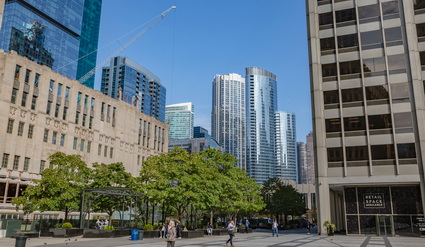The conversion of former offices to apartments reached an all-time high in the last two years—40% of all existing building repurposing projects—reflecting a rapid increase in “adaptive reuse” throughout the nation, according to a Nov. 7 RentCafe analysis of Yardi Matrix data. (Download pdf or see website)
Conversion Trend
- Large cities such as Philadelphia, Cleveland, and Pittsburgh have embraced conversion projects to repurpose old buildings and unused office spaces, according to the report. (BusinessInsider, Nov. 8)
- Offices are the largest share of all building types undergoing conversion, representing 28% of future apartments, followed by hotels (22%) and factories (16 %).
- Los Angeles ranks first in the nation with the most converted apartments in the first half of 2022. (RentCafe analysis of Yardi Matrix data.)
Conversion Development Obstacles
- As building occupancy levels remain depressed due to lingering remote working arrangements, cities such as New York, Los Angeles and Chicago are proposing plans to relax building rules and create tax incentives for property owners undertake conversions. (Axios, Sept. 28)
- A Roundtable-led coalition of 16 national real estate organizations on Oct. 12 recommended certain enhancements and expansions to a 20 percent tax credit for qualified property conversion expenditures, which is part of the Revitalizing Downtowns Act (S. 2511, H.R. 4759). The recommendations include expanding the category of properties eligible for the credit to various types of commercial buildings such as shopping centers and hotels.
- The coalition letter also emphasized the significant obstacles that the industry continues to face with conversion projects. Obstacles that frequently arise include property acquisition, permitting, development review, toxic contamination, property age and code conformance, and a “not in my backyard” (NIMBY) sentiment. Additionally, the structural elements of an existing structure—columns, beams, floor layouts and size, ceiling height, etc.—often pose hurdles that add cost and extra delays to an otherwise desirable repurposing of a building. (GlobeSt, Oct. 12 and Roundtable Weekly, Oct. 14)
The letter to the bill’s sponsors, Sen. Debbie Stabenow (D-MI) and Rep. Jimmy Gomez (D-CA), offers several recommendations to help ensure the legislation drives additional economic investment and brings down housing costs.
# # #



